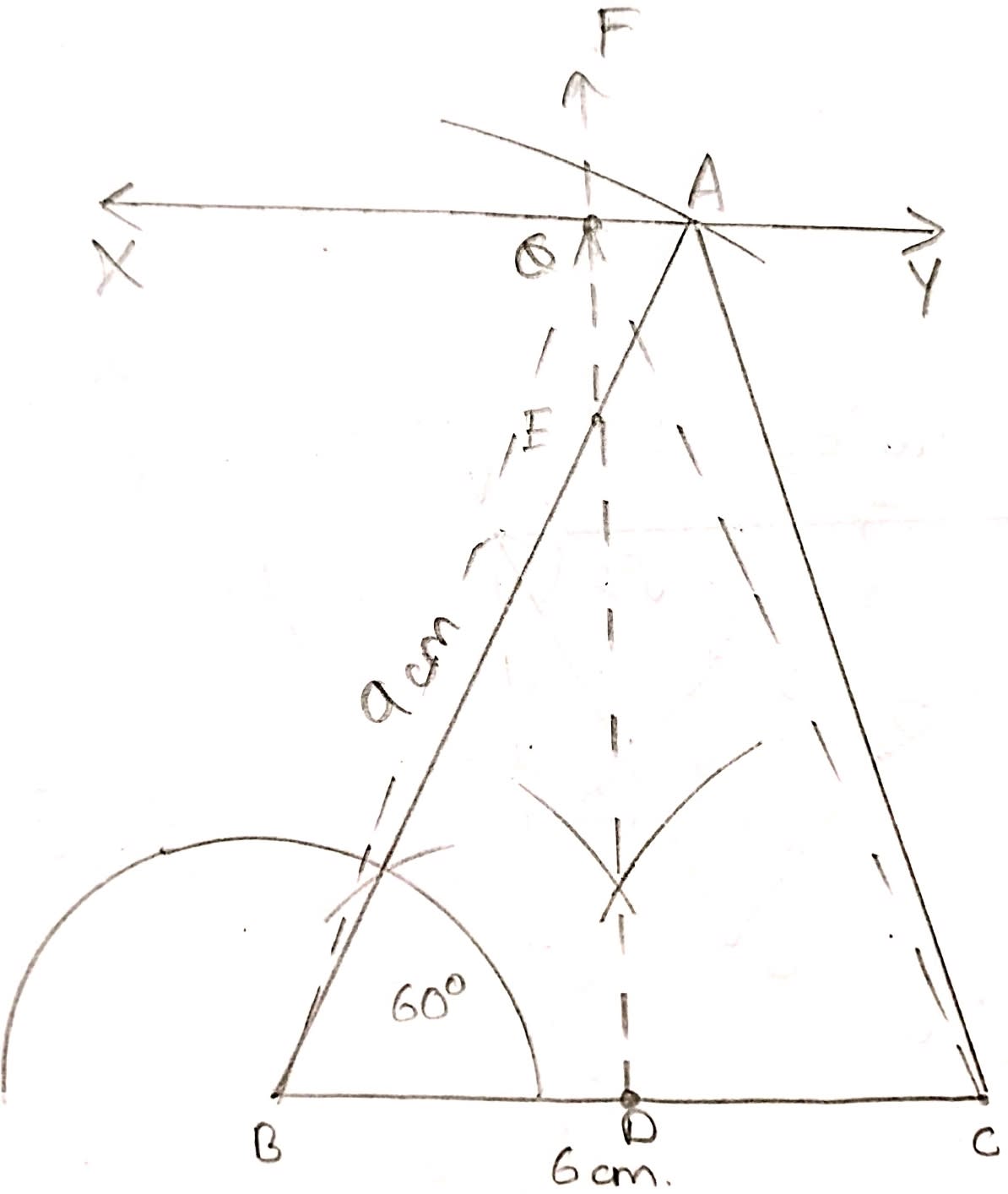Mathematics
Ruler and compasses only may be used in this question. All construction lines and arcs must be clearly shown, and be of sufficient length and clarity to permit the assessment.
(i) Construct a triangle ABC, in which BC = 6 cm, AB = 9 cm, and ∠ABC = 60°.
(ii) Construct the locus of all points, inside △ABC, which are equidistant from B and C.
(iii) Construct the locus of the vertices of the triangles with BC as base, which are equal in area to △ABC.
(iv) Mark the point Q, in your construction, which would make △QBC equal in area to △ABC, and isosceles.
(v) Measure and record the length of CQ.
Locus
22 Likes
Answer
(i) Steps of construction :
Draw BC = 6 cm as base.
Construct ∠ABC = 60° and make an arc from B such as AB = 9 cm.
Join points A, B and C such that ABC forms a triangle.

(ii) We know that locus of points equidistant from two points is the perpendicular bisector of the line segment joining two points.
From figure,
Right bisector of BC (i.e. DE in figure) inside △ABC.
(iii) The locus of the vertices of the triangles with BC as base, which are equal in area to △ABC is a straight line through A and parallel to BC, the area will be same as triangles will be on same base and between same parallel lines.
(iv) Q is the point of intersection of right bisector of BC and the straight line through A parallel to BC.
(v) On measuring,
CQ = 8.2 cm approximately.
Answered By
15 Likes
Related Questions
Construct an isosceles triangle ABC such that AB = 6 cm, BC = AC = 4 cm. Bisect ∠C internally and mark a point P on this bisector such that CP = 5 cm. Find the points Q and R which are 5 cm from P and also 5 cm from the line AB.
Use ruler and compasses only for this question. Draw a circle of radius 4 cm and mark two chords AB and AC of the circle of length 6 cm and 5 cm respectively.
(i) Construct the locus of points, inside the circle, that are equidistant from A and C. Prove your construction.
(ii) Construct the locus of points, inside the circle, that are equidistant from AB and AC.
Draw a straight line AB of length 8cm. Draw the locus of all points which are equidistant from A and B. Prove your statement.
A point P is allowed to travel in space. State the locus of P so that it always remains at a constant distance from a fixed point C.